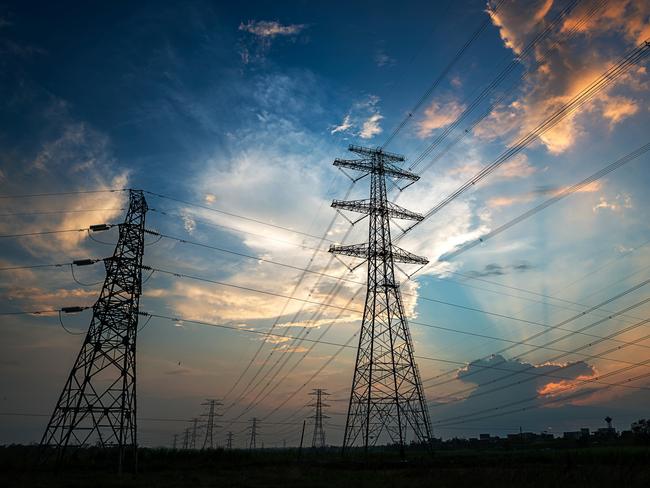New $200,000 payment for every kilometre of high voltage power line crossing private land
NSW landowners who allow high voltage electricity pylons to cross their land will receive a $200,000 per kilometre payment under an Australian-first scheme – but not everyone’s a fan.
NSW
Don't miss out on the headlines from NSW. Followed categories will be added to My News.
NSW landowners who allow high voltage electricity pylons to cross their land will receive a $200,000 per kilometre payment in a bid to encourage them to support the building of a modern electricity grid.
Landowners have furiously protested at the compulsory purchase of the land for high voltage pylons for new green power schemes including the 500 kilowatt HumeLink power line delivering power from Snowy 2.0.
The new payment will guarantee landowners $10,000 a year, indexed to inflation, for 20 years for every kilometre of power line that crosses their land. The payments will be in addition to one-off compensation payments for the compulsory purchase of easements.
Deputy Premier and Regional NSW minister Paul Toole said the scheme was the first of its kind in Australia.
“Building new transmission infrastructure is critical to connecting renewable energy sources to the grid and most of this new infrastructure will be built in regional NSW,” Mr Toole said.

“Supporting landowners and regional communities who host this infrastructure will help us build the network we need in time to ensure energy security, supply and affordability for families across NSW.”
Energy Minister Matt Kean said: “This is a huge win for landowners across NSW that will almost double the average payment they currently receive – and importantly – the rate of the payments will be calculated in the same way regardless of where you live to ensure all landowners are treated equitably under the scheme.”
But many landowners remain angry that they are not given a choice on where the pylons will go.
NSW Farmers Energy group chairman Reg Kidd warned: “We will not allow this new payment scheme to be used to silence those who are concerned about their property.
“Rural landowners are key stakeholders in achieving our targets, and they deserve to be consulted and respected.”
Australian Energy Infrastructure Commissioner Andrew Dyer said “timely compensation” to landholders was crucial. “Major grids need to be built fairly quickly and you want to be recognising, rewarding and appreciating that landholders are a huge part of this and you cannot do it without them.”

The announcement comes as lobby groups called for the Federal Government to match its pledge to bury 90km of power lines from the Marinus Link in Victoria by doing the same for the HumeLink in NSW.
Michael Katz from Stop, Rethink HumeLink Towers said transmission cables from Wagga Wagga to the edge of Sydney needed to be buried.
“We need to see it become the way of all future transmission projects, including HumeLink which is currently planned to see 360km long, 70-metre-wide scar cut through southern NSW, consisting of towers up to 85 metres tall,” he said.





